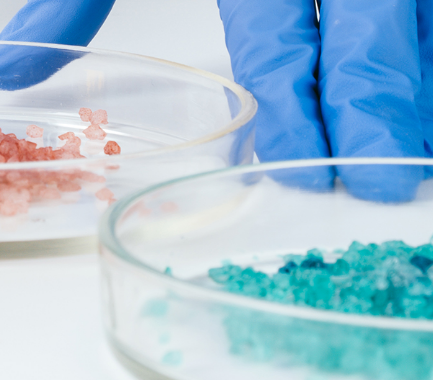Your contact
PENPET-Team - Hamburg

Christoph Meister
Sales
Tel. +49 (0) 40 - 675 7 99 30
sales@penpet.de
Get in touch with us.
1,4 Butanediol (BDO)
1,4 Butanediol is an organic compound belonging to the divalent alcohols. It is of great industrial importance as a starting material for numerous chemical synthesis processes and for the production of plastics. Large amounts of the substance are obtained in a two-stage process from formaldehyde and acetylene with subsequent hydrogenation of the intermediate 2-butyne-1,4-diol. In addition, there are processes based on propene and maleic anhydride. Manufacturing processes based on the fermentation of renewable raw materials are also gradually gaining in importance.
1,4 Butanediol is used as a raw material and intermediate product in numerous processes in the chemical industry. It is used, among other things, for the production of polyurethanes, polyamides, polycarbonates and polyesters. The compound is an important starting material for the production of solvents such as γ-butyrolactone, N-methyl-2-pyrrolidone and tetrahydrofuran. In addition, 1,4 butanediol itself serves as a solvent as well as a plasticizer, a humectant, a carrier fluid for ultrasonic applications, and as an additive in lubricants.
At PENPET you get 1,4 butanediol of the highest quality - from a reliable partner who will also meet your requirements in the long term. We look forward to receiving your inquiry for an individual offer. The liquid can be delivered promptly in drums with a capacity of 200 kg or loose in iso containers and road tankers.
CAS no. 110-63-4
EINECS no. 203-786-5
Molecular formula: C4H10O2
Synonyms: 1,4-butanediol, butane-1,4-diol, tetramethylene glycol, tetramethylene glycol, 1,4-dihydroxybutane, 1,4-butylene glycol, B1D, BDO
Areas of application: Starting material for the production of polyesters, polyamides and polyurethanes, raw material for the production of solvents, reactive diluents, disinfectants and intermediate products in the chemical industry, use as a solvent, humectant and plasticizer
More Information
1,4 Butanediol is a dihydric alcohol based on the regular organic compound butane, with a hydroxy group on each of the two terminal carbon atoms. These two functional groups give the substance a sufficient electric dipole moment for very good solubility in water. The reactive profile of the compound is also determined by the hydroxy groups. For example, 1,4-butanediol can undergo the typical reactions of an alcohol, such as esterification and oxidation with aldehyde formation.
Due to its linear structure with two terminal functional groups, the substance is suitable as a comonomer for polymerization reactions and the construction of complex plastic compounds. The designation 1,4-butanediol indicates the position of the hydroxyl groups within the molecule, through which the compound differs structurally from its isomers 1,3-butanediol, 1,2-butanediol and 2,3-butanediol.
Under normal storage conditions, 1,4-butanediol is a low-volatile, very viscous liquid. The substance is colorless and has no noteworthy odor. It already melts when it cools down to 20 °C and gradually solidifies into a solid as the temperature drops. The boiling point of 1,4 butanediol is 230 °C. The compound is miscible with water in any proportion and also readily soluble in many organic solvents such as dimethyl sulfoxide, ethanol, glycol ethers and acetone. However, 1,4-butanediol is not soluble in non-polar hydrocarbons and chlorinated hydrocarbons such as chloroform and heptane.
1,4 Butanediol is a chemically stable compound that does not readily volatilize and can be safely stored in sealed containers. However, violent and dangerous reactions can occur in contact with strong reducing agents, strong oxidizing agents, acid anhydrides and acid chlorides.
The flammable liquid is difficult to ignite without an external source of ignition. Although it is only very slightly volatile, it can form explosive vapor-air mixtures. When handling open containers of 1,4 butanediol, ensure that there is sufficient distance to flames, sparks, hot surfaces and other sources of ignition such as electrostatic discharge.
Combustion or thermal decomposition of 1,4 butanediol releases noxious and irritating gases. Dangerous amounts of tetrahydrofuran, propene, carbon monoxide and carbon dioxide, among other things, can form here.
1,4 Butanediol poses acute health hazards. Contact with the skin and eyes usually only leads to temporary irritation and redness. Affected parts of the body should nevertheless be cleaned or rinsed out quickly with sufficient water. An ophthalmological assessment is recommended. Inhalation of aerosols and vapors of the compound may also cause mild respiratory irritation.
However, swallowing 1,4 butanediol in particular can cause serious damage to health, since the compound is quickly metabolized and can cause severe symptoms. Depending on the amount ingested, in addition to gastrointestinal complaints, significant disorders of the central nervous system such as intoxication, euphoria, excitement, numbness and aggressiveness, but also drowsiness, coma and cramps can be triggered. Cardiovascular complaints, functional disorders of the liver and kidneys and pulmonary edema can also occur. If 1,4 butanediol is ingested orally, medical treatment should be sought immediately.
The compound has been assessed as slightly hazardous to water due to possible harm to aquatic organisms. A penetration of 1,4 butanediol into the ground, the sewage system or open waters is therefore to be avoided. Any release of the substance into the environment must be reported to the competent authorities. The compound is not subject to any special transport regulations.
